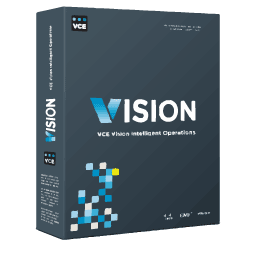Superna has been busy focusing on new product developments (monitoring and configuration management databases) that will show how APIs will change the way software is written. In fact, APIs can help Internet service providers build applications faster, reduce complexity, and accelerate deployments with less effort.
 I realized the importance of converged infrastructure APIs when Superna was integrating its data center API for converged infrastructure using VCE Vision™ Intelligent Operations’ software API. VCE’s easy integration with the Vision API illuminates one real problem with data center software today: neither an object model nor an API exists that can connect data center objects across domains. APIs should make developers lives easier, by allowing them to focus on adding value without re-inventing software modules that collect information every time a new application is written.
I realized the importance of converged infrastructure APIs when Superna was integrating its data center API for converged infrastructure using VCE Vision™ Intelligent Operations’ software API. VCE’s easy integration with the Vision API illuminates one real problem with data center software today: neither an object model nor an API exists that can connect data center objects across domains. APIs should make developers lives easier, by allowing them to focus on adding value without re-inventing software modules that collect information every time a new application is written.
For example, let’s say I want to simplify and automate resource management and alarm correlation across domains (storage, compute, network). I’d need to build a virtual machine (VM) provisioning application or even a fault monitoring application. So what does my software application need to know?
- VMware host I want the VM to run on
- The data store it will be stored on
- The disk array the data store is stored on
- The network links that connect my VM to the network
- The network links that connect my ESX host to the storage for policies, quality of service, security settings to be applied
- The logical or physical connections between all the devices
- The interface to the devices (SNMP, CLI, passwords, password rules, deal with password changes, etc.)
The list goes on and on.
In order to get this information, the app will need a couple software functions (device discovery and topology, which typically depend on SNMP and several different MIBs), as well as alarm processing that needs to run and build a model for my provisioning application. These two functions will return device-by-device information, as well as enough data to allow physical or (at a minimum) logical topology to be determined. Then it will allow the overlay alarm data and meta device data into the topological model and try to correlate the alarm data to allow my app to make decisions and automate some IT functions (i.e. the reason for building the app in the first place).
 Today’s multi-vendor data centers return insufficient data to reliably build a topology that is accurate enough to handle move/add changes to the infrastructure and allow my provisioning/monitoring application to do its job without breaking if a link, MIB, command syntax, firmware, device password or software changes. For developers, these glue modules are a necessary evil to build the provisioning and monitoring applications. However, the provisioning and monitoring application is only as good as the discovery detection and topology data it collects.
Today’s multi-vendor data centers return insufficient data to reliably build a topology that is accurate enough to handle move/add changes to the infrastructure and allow my provisioning/monitoring application to do its job without breaking if a link, MIB, command syntax, firmware, device password or software changes. For developers, these glue modules are a necessary evil to build the provisioning and monitoring applications. However, the provisioning and monitoring application is only as good as the discovery detection and topology data it collects.
This is where converged APIs come in and allow developers to use a simple API to gather this information in a reliable way so developers can focus on building high value applications and spend less time worrying about device discovery. Since converged infrastructure is connected in a reliable way, the network topology and relationships are much easier to model and make decisions on.
We used Vision API to build two applications in less than two months! This wouldn’t have been possible if we had to first build discovery and topology functions. There’s more to Vision than just topology, but it’s a huge requirement to start building converged infrastructure applications.